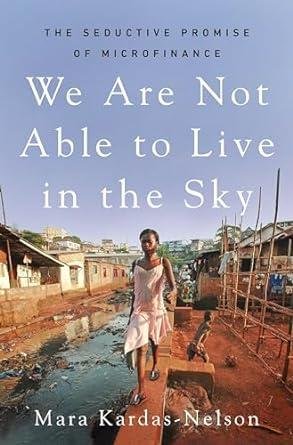Microfinance has often been hailed as a revolutionary tool for economic development, particularly in impoverished regions. The concept promises to empower individuals, especially women, by providing them with the financial means to start small businesses, improve their living standards, and ultimately break the cycle of poverty. However, the book "We Are Not Able to Live in the Sky: The Seductive Promise of Microfinance" critically examines this narrative, questioning whether microfinance truly delivers on its lofty promises. This article delves into the book's arguments, presenting a comprehensive analysis of microfinance's impact, both positive and negative.
The Origins and Evolution of Microfinance
Microfinance, as a formal financial service, traces its roots back to the 1970s with the pioneering work of Muhammad Yunus and the Grameen Bank in Bangladesh. The idea was simple yet powerful: provide small loans to the poor, who are often excluded from traditional banking systems, to help them start or expand small businesses. Over the decades, the concept spread globally, adapting to various cultural and economic contexts. The microfinance movement garnered significant attention, culminating in Yunus and the Grameen Bank receiving the Nobel Peace Prize in 2006.
The Allure of Microfinance
The allure of microfinance lies in its promise to empower the marginalized. It suggests a win-win scenario where borrowers gain access to capital, lenders earn interest, and communities experience economic upliftment. The success stories are compelling: women starting their own businesses, families affording education for their children, and entire communities transforming economically. These narratives have fueled the growth of microfinance institutions (MFIs) worldwide, attracting investments from governments, NGOs, and private investors.
Critical Perspectives on Microfinance
Despite its celebrated successes, microfinance has faced increasing scrutiny. "We Are Not Able to Live in the Sky" brings these critical perspectives to the forefront, challenging the notion that microfinance is a panacea for poverty. The book argues that while microfinance can offer short-term relief, it often fails to address the structural issues that perpetuate poverty.
High Interest Rates and Debt Cycles
One of the book's central criticisms is the high interest rates charged by many MFIs. In contrast to traditional banking, where interest rates are relatively low, microloans often come with exorbitant rates to cover the high costs of servicing numerous small loans. This can lead to debt cycles, where borrowers take out new loans to repay old ones, ultimately exacerbating their financial instability rather than alleviating it.
Impact on Women's Empowerment
Microfinance is frequently promoted as a tool for women's empowerment. The narrative suggests that providing women with financial resources enables them to become independent and assertive economic agents. While there are indeed success stories, the book highlights that the reality is often more complex. In many cases, loans are controlled by male family members, undermining the empowerment narrative. Furthermore, the pressure to repay loans can lead to increased stress and domestic conflict.
Economic and Social Contexts
The book emphasizes the importance of considering the broader economic and social contexts in which microfinance operates. In regions with limited market opportunities, even well-intentioned microloans may fail to create sustainable businesses. Without access to markets, infrastructure, and supportive services, the potential for microfinance to drive long-term economic growth is severely constrained.
Microfinance and Entrepreneurship
A key assumption of microfinance is that everyone has the potential to be an entrepreneur. However, entrepreneurship requires more than just capital; it demands skills, knowledge, and a conducive environment. The book critiques the oversimplification of this assumption, arguing that not all microfinance recipients are equipped to run successful businesses. Moreover, the saturation of markets with numerous small businesses can lead to fierce competition and reduced profitability.
Alternative Approaches to Poverty Alleviation
"We Are Not Able to Live in the Sky" calls for a reevaluation of microfinance as a singular solution to poverty. It advocates for a more holistic approach that includes investments in education, healthcare, infrastructure, and social services. By addressing the root causes of poverty, these complementary strategies can create a more supportive environment for microfinance to be effective.
The Role of Regulation and Oversight
The book also underscores the need for better regulation and oversight of the microfinance industry. In the absence of stringent regulatory frameworks, some MFIs have engaged in predatory lending practices, exploiting vulnerable populations. Strengthening regulations can help ensure that microfinance serves its intended purpose of fostering economic development and social empowerment.
Conclusion
"We Are Not Able to Live in the Sky: The Seductive Promise of Microfinance" offers a critical and thought-provoking analysis of microfinance's role in poverty alleviation. While acknowledging the positive impacts, the book highlights significant challenges and limitations that need to be addressed. By considering the broader economic and social contexts and advocating for complementary strategies, it calls for a more nuanced understanding of microfinance's potential. For those interested in development economics, social justice, and financial inclusion, this book is a valuable resource that encourages a deeper reflection on how to genuinely empower the world's poor.
The EPUB format of this book ensures easy access for readers interested in exploring these critical perspectives on microfinance. As the debate on the effectiveness of microfinance continues, this book provides an essential contribution to understanding its complexities and seeking more comprehensive solutions to global poverty.
